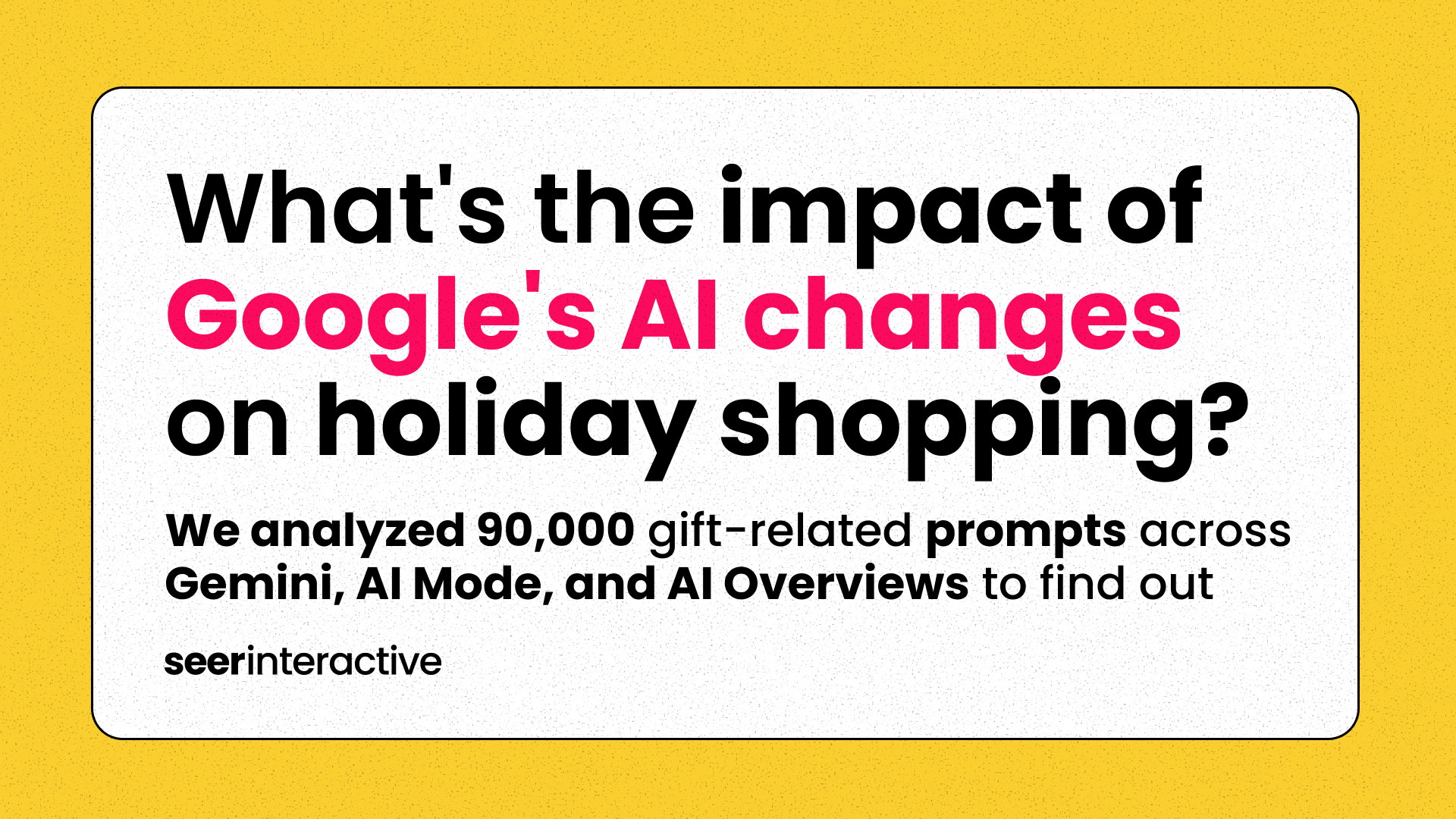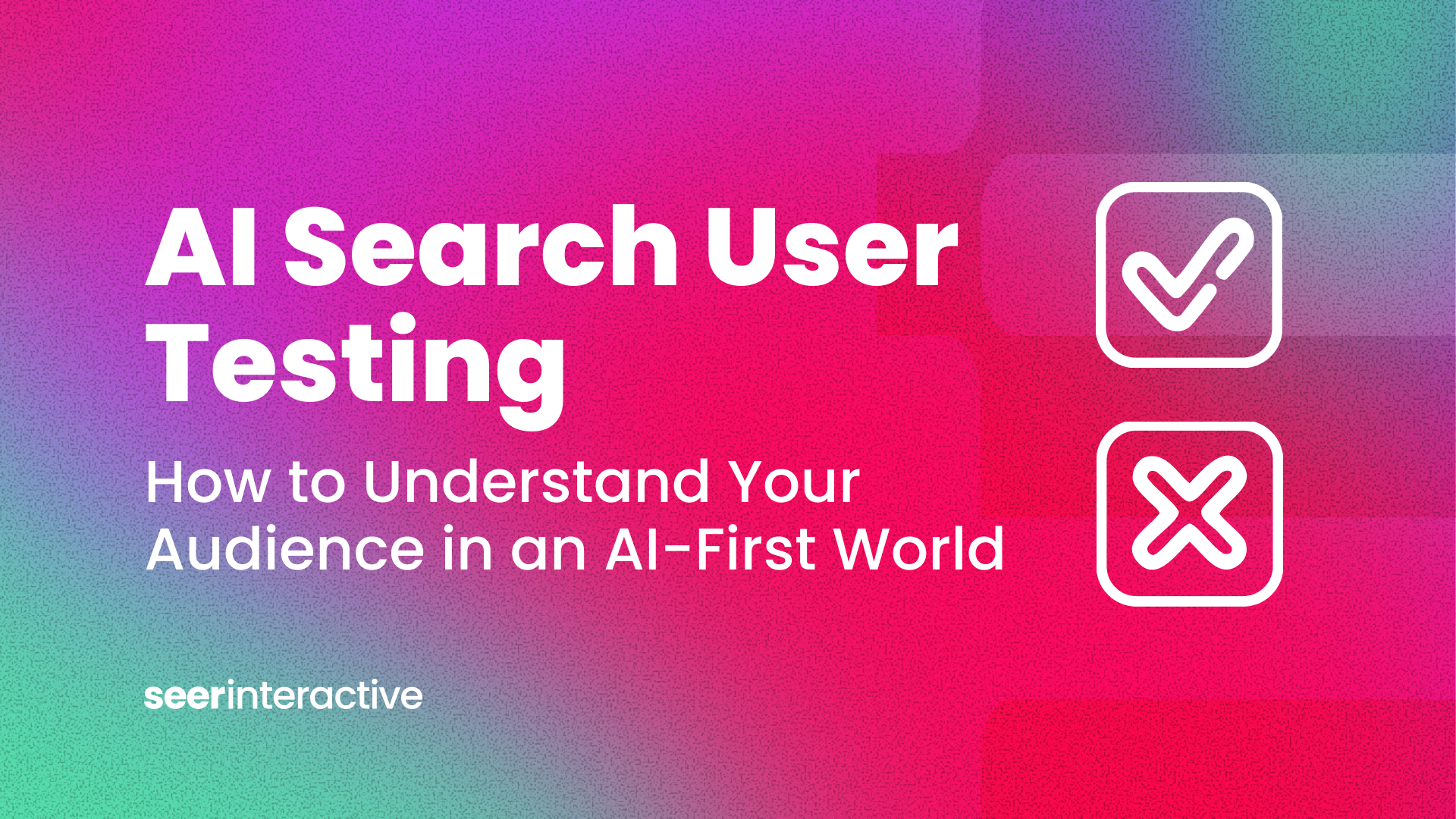AI Mode is out of the lab and into the hands of the public, and we should expect that some version of AI Mode becomes the default search experience on Google within the next 12 months. What does this mean for SEO and PPC strategies? Advertisers can breathe a light sigh of relief—ads are rolling out along with the public launch (of course, there was no way Google could completely sacrifice all of that ad revenue in favor of this kind of a seamless UX). But SEOs? Buckle up. Measurement is about to get a whole lot more complicated.
The good news is that this is exactly the future of search we've been preparing for with our GEO/AEO testing - we understand that this search works differently than traditional search, and we're learning more through our testing exactly how it works differently.
We’ll be updating this post over the next few days with new ideas on how to track the adoption of Google’s new AI Mode in your own data.
What to watch NOW
Hypothesis: PPC impressions will decline as people move to AI Mode.
Ads are just beginning to roll out in AI Mode. Fewer ad impressions can be a sign that your audience is jumping ship from traditional search to AI Mode.
Hypothesis: Search queries will get longer. Watch for longer queries in your PPC and GSC data.
As people get used to using AI Mode, expect to see more 5, 6, 10+ query strings showing up in your PPC and GSC data. Longer queries in GSC may indicate that people are searching in AI Mode, and longer queries in PPC data may indicate that people intended to search in AI Mode.
Hypothesis: Organic click-through rates will decline, especially for longer-tail queries.
We already know that Paid and Organic CTRs decline when an AIO is present. Expect this trend to continue, but over the next few weeks keep an eye on CTRs on the long-tail queries mentioned above. Long-tail query + low CTR could = AI Mode activity.
Hypothesis: The competitive makeup of traditional SERPs will shift due to changing user behavior. Benchmark the organic competitors ranking TODAY (pre-AI Mode rollout) and re-pull that data weekly (post-AI Mode rollout).
The algorithms that power Google’s AI Mode are not exactly the same as the ones that power traditional search. But today, user engagement (e.g. click-through rate) is a strong ranking signal in traditional search. As people migrate to AI Mode, they’ll engage with traditional search results differently - potentially less. Watch for shifts in the competitive makeup of your SERPs that indicate people are clicking on certain results less. For example: will Reddit/forums become more or less prevalent than the current benchmark as people get answers directly in AI Mode?
Hypothesis: Attribution will continue to get harder as this rolls out, and Google will not give up the keys to differentiating this traffic. Organic traffic is no longer a viable KPI. AI Mode Organic traffic recorded as Direct or Unknown, a.k.a. dark traffic.
This one is more a statement of fact than a true "hypothesis," and we've been discussing the pitfalls of traditional SEO KPIs for a long time. Links in AI Mode were tagged rel="noopener noreferrer", meaning they directed the browser not to forward the previous site domain into your analytics system. When this rollout first began, there was no way to distinguish AI Mode traffic from Direct traffic to your website in traditional analytics platforms (note: this is not the case for links in AI Overviews, and it seems like this is a bug that could change with the full rollout). I do not expect Google to make it easy to measure this; I believe this is part of a larger push to move folks away from measuring traffic as a KPI, just like the (not provided) forced move away from keywords. Watch for growing Direct traffic as an indicator of your audience adopting AI Mode. Consider investing in clickstream data to get a baseline understanding of user behavior, and watch Direct traffic to the pages you care about to see if AI Mode might be driving visits. May 28, 2025 Update: Google has fixed this bug and AI Mode traffic is now being recorded as Google organic traffic.
Hypothesis: More unique and long tail queries will fall into the ‘unreported’ category in paid search query data.
Watch for that category to rise as a signal that more of your audience is engaging with AI Mode. Google said at GML that “Under the hood, AI Mode uses our query fan-out technique, breaking down your question into subtopics and issuing a multitude of queries simultaneously on your behalf.” - so what this looks like in query data could vary greatly. Will it report the AI mode prompt or the query fan-out?
Hypothesis: AI Mode is really just Google Googling its own index, and we can use traditional SERP rankings + AIO citations + AIO referral traffic + Direct traffic as directional AI Mode attribution.
Studies have shown that Google's AI Overviews frequently cite the same websites that rank in the top 1-2 pages of traditional SERPs. There's a strong correlation between brands ranking on page 1 and LLM mentions. Continue tracking traditional rankings to see which of your pages rank well, and track when your site is cited in AI Overviews as a proxy for AI Mode "rankings." Then, watch for Direct and AIO referral traffic coming to those pages. Assembling those puzzle pieces of data can give you directional insight into AI Mode traffic.
What Seer is doing today for our clients
We’re monitoring daily Google ads impressions and clicks in SeerSignals across our entire client data set, and get alerts for clients that start to trend downward. We'll know to shift strategy for them first.
We already have a view set up in SeerSignals that alerts us of all new PPC queries present in a client's data set over the last 7 days, and we're building an aggregate view to track average query length across all clients.


